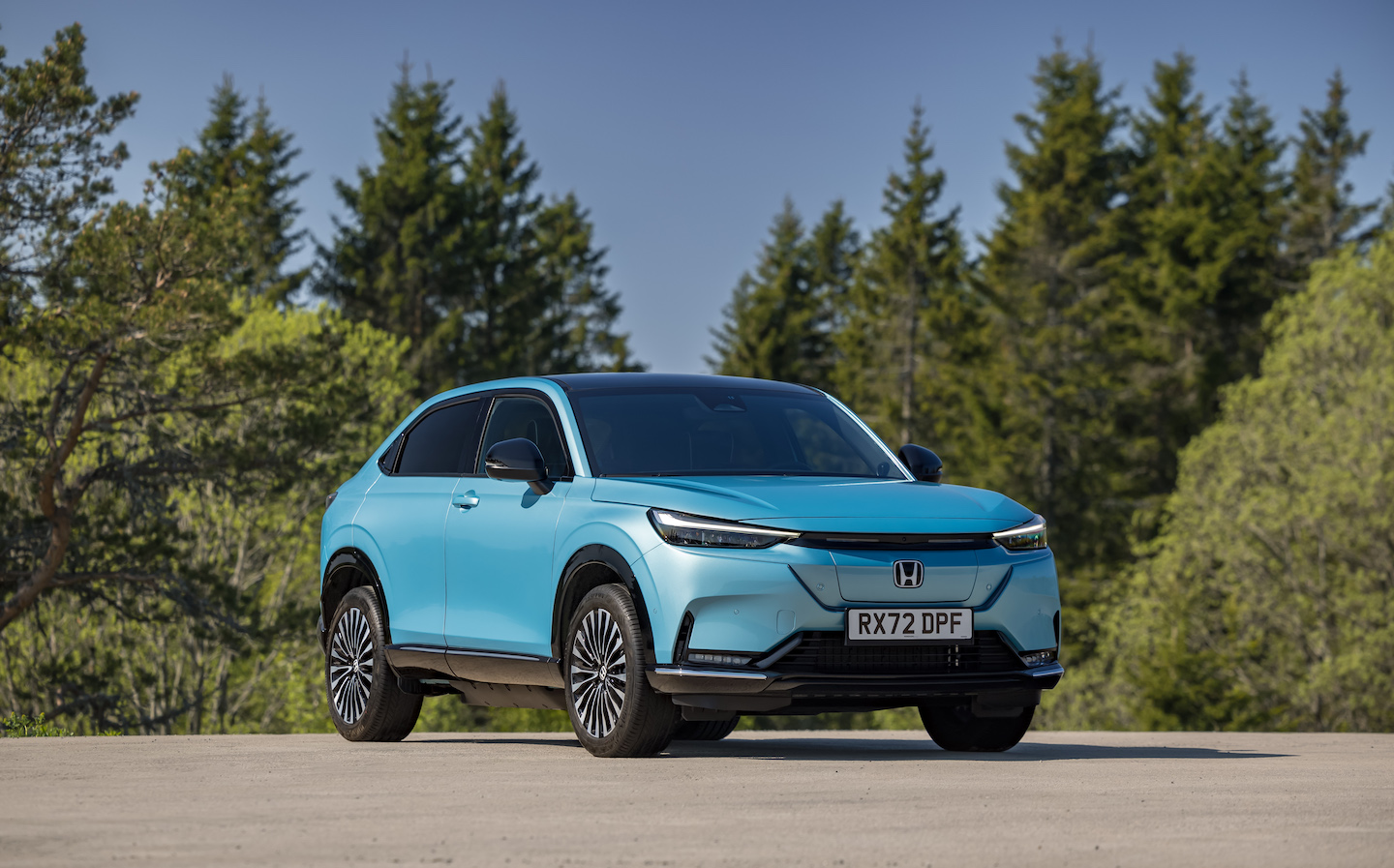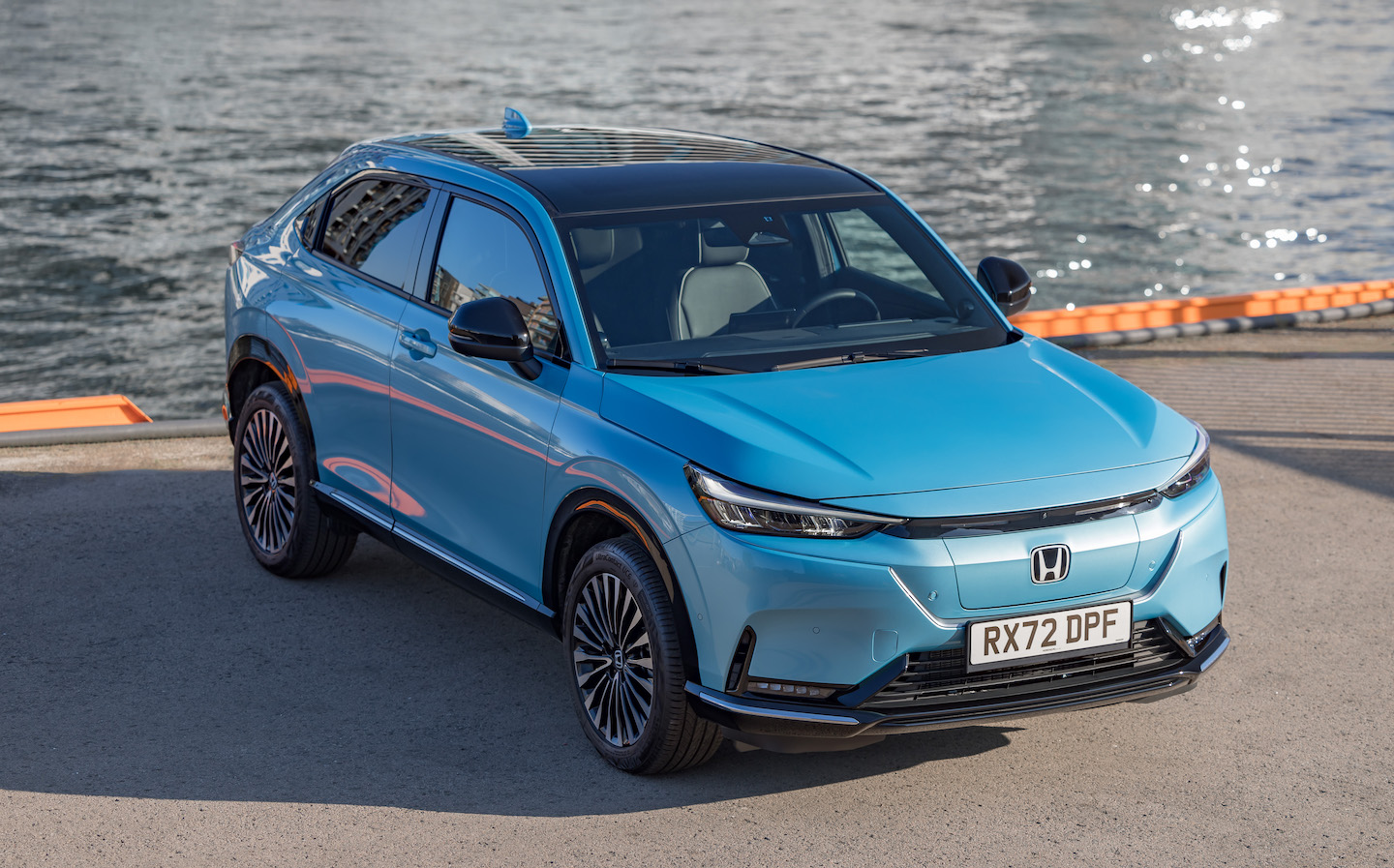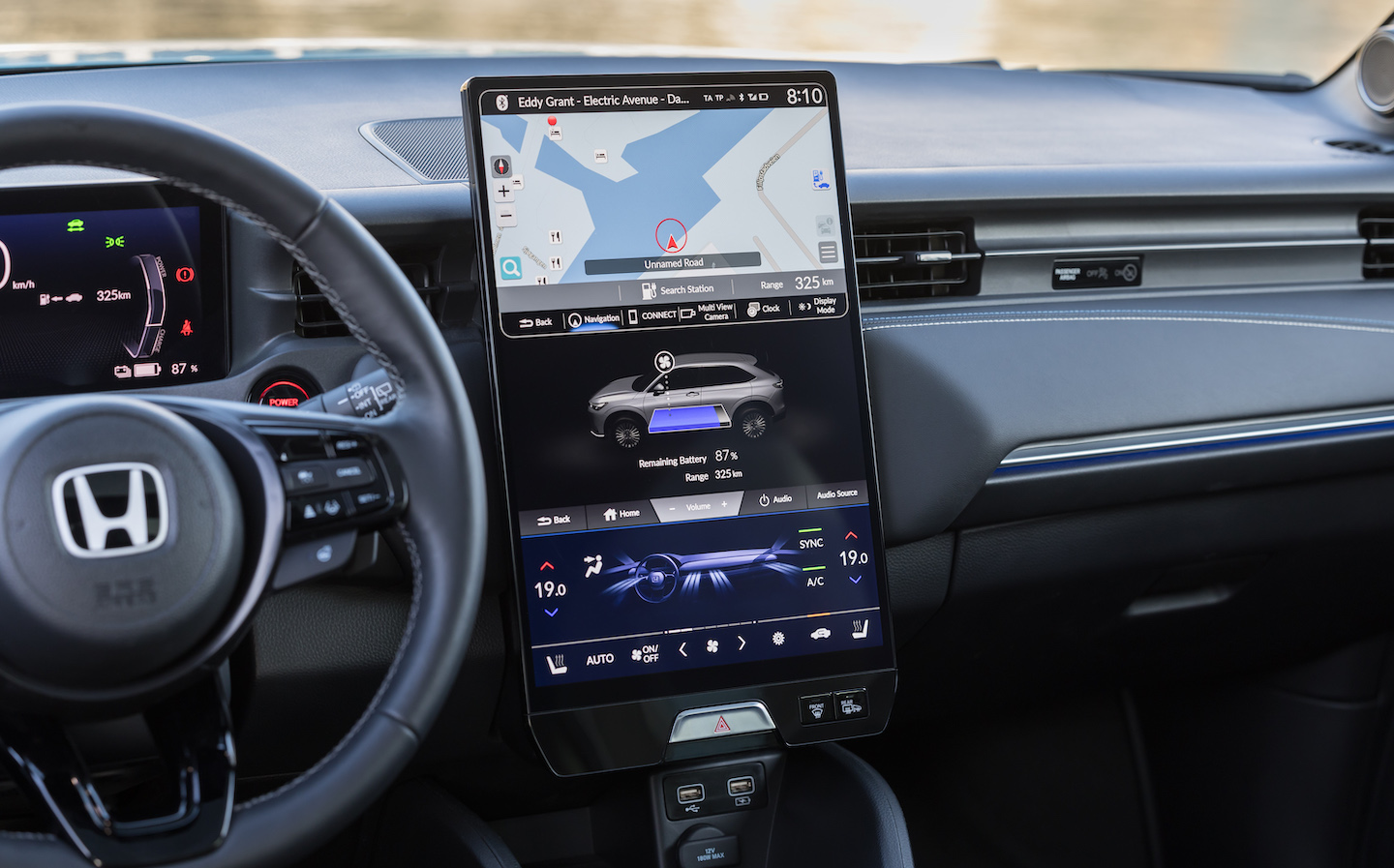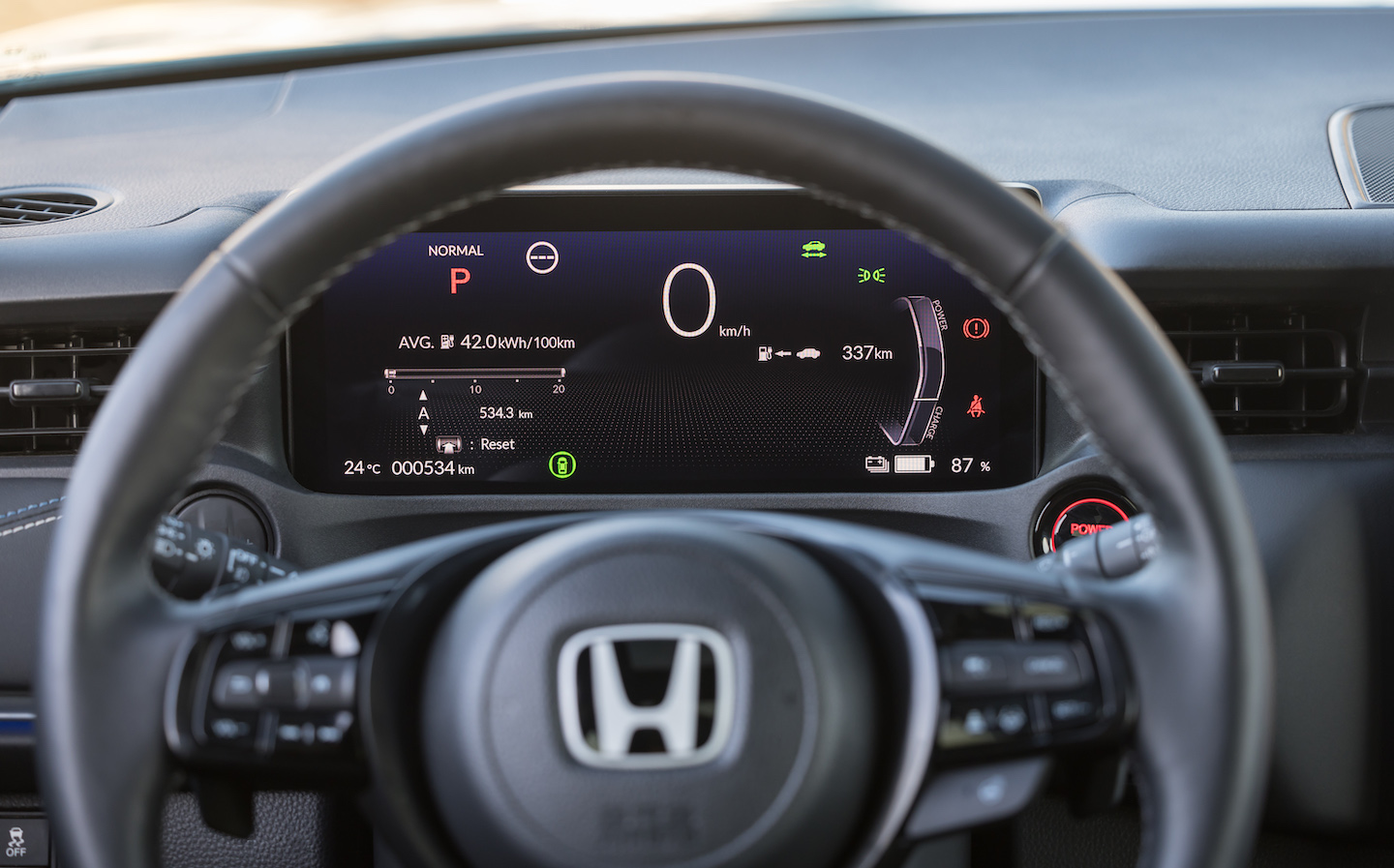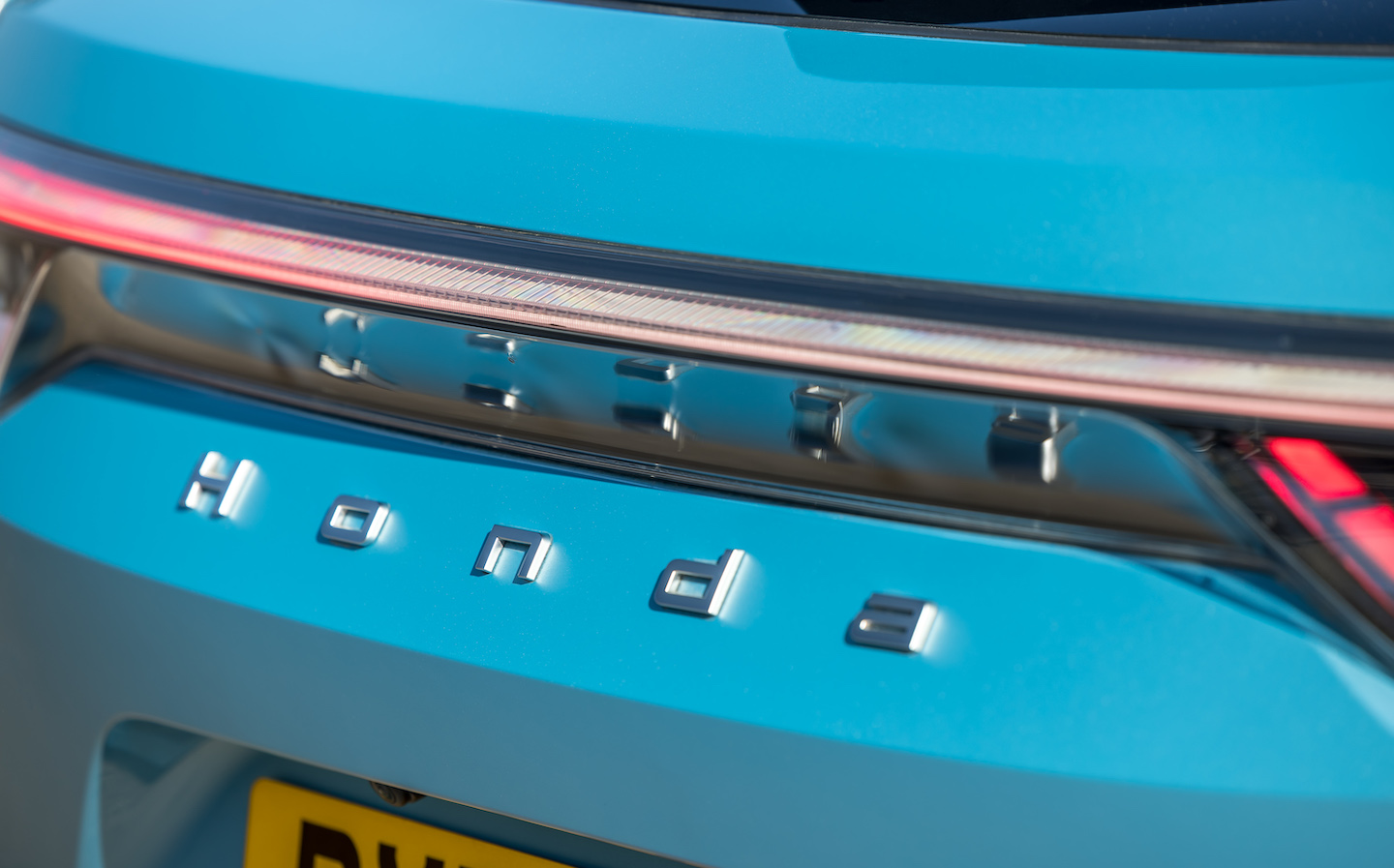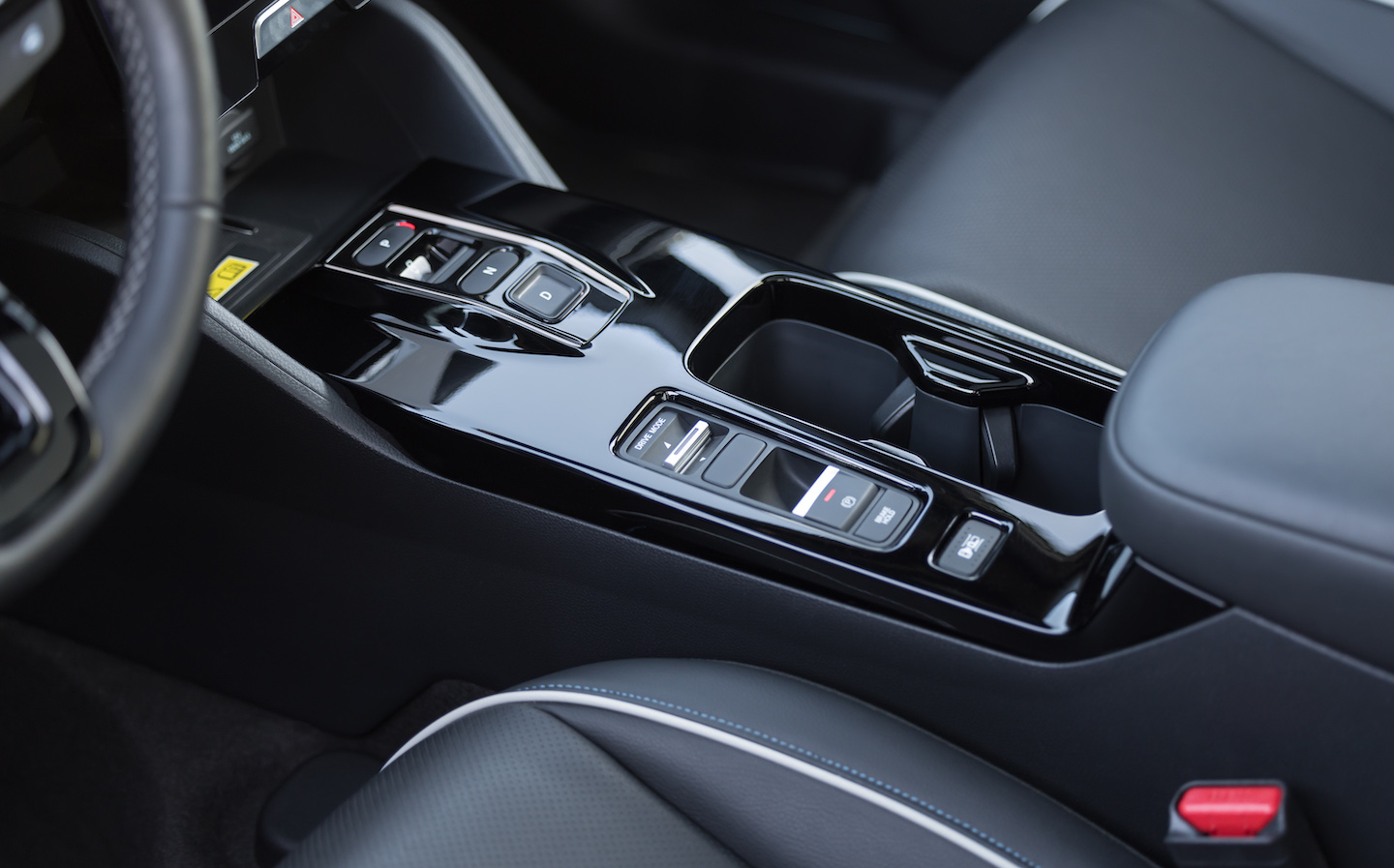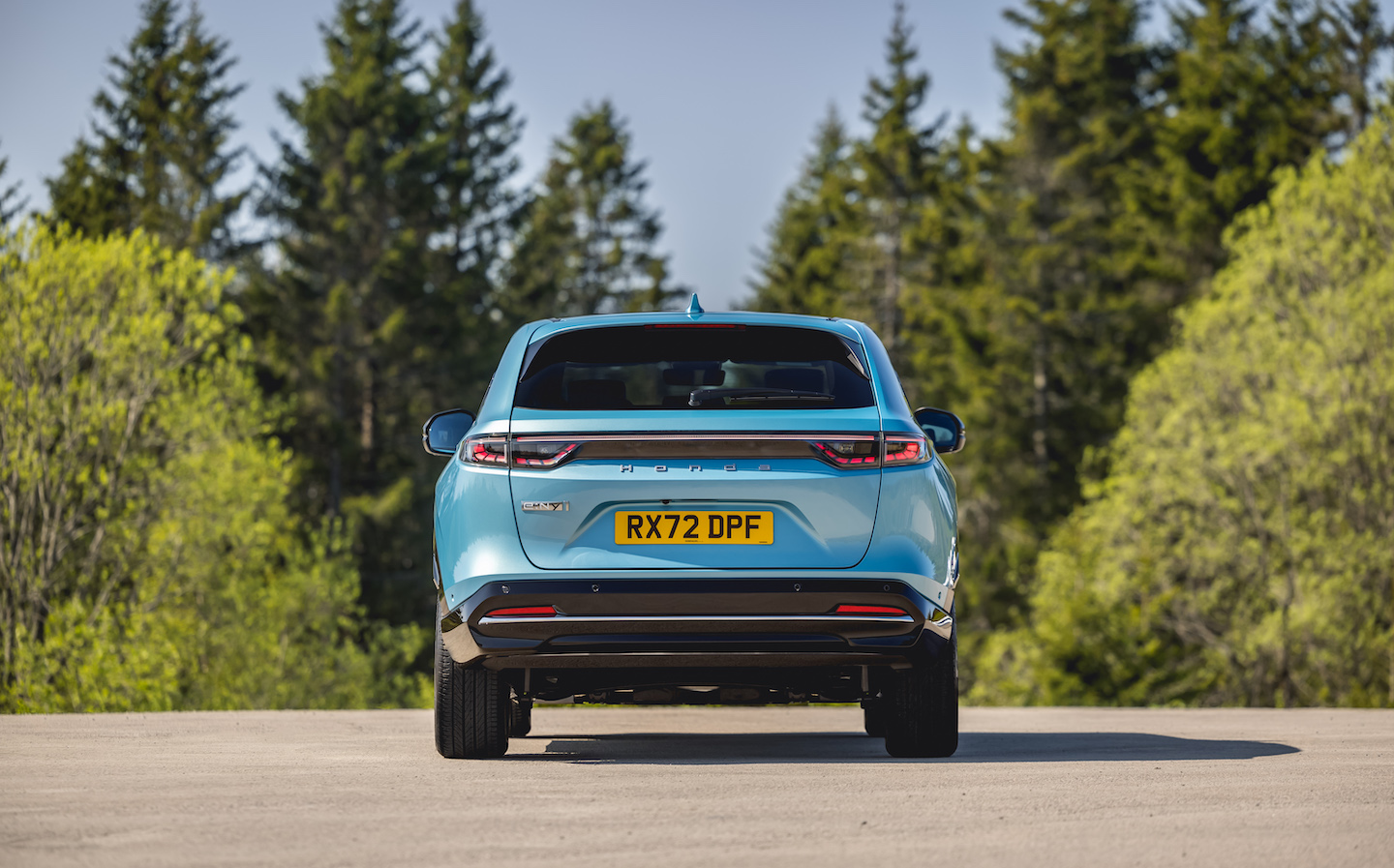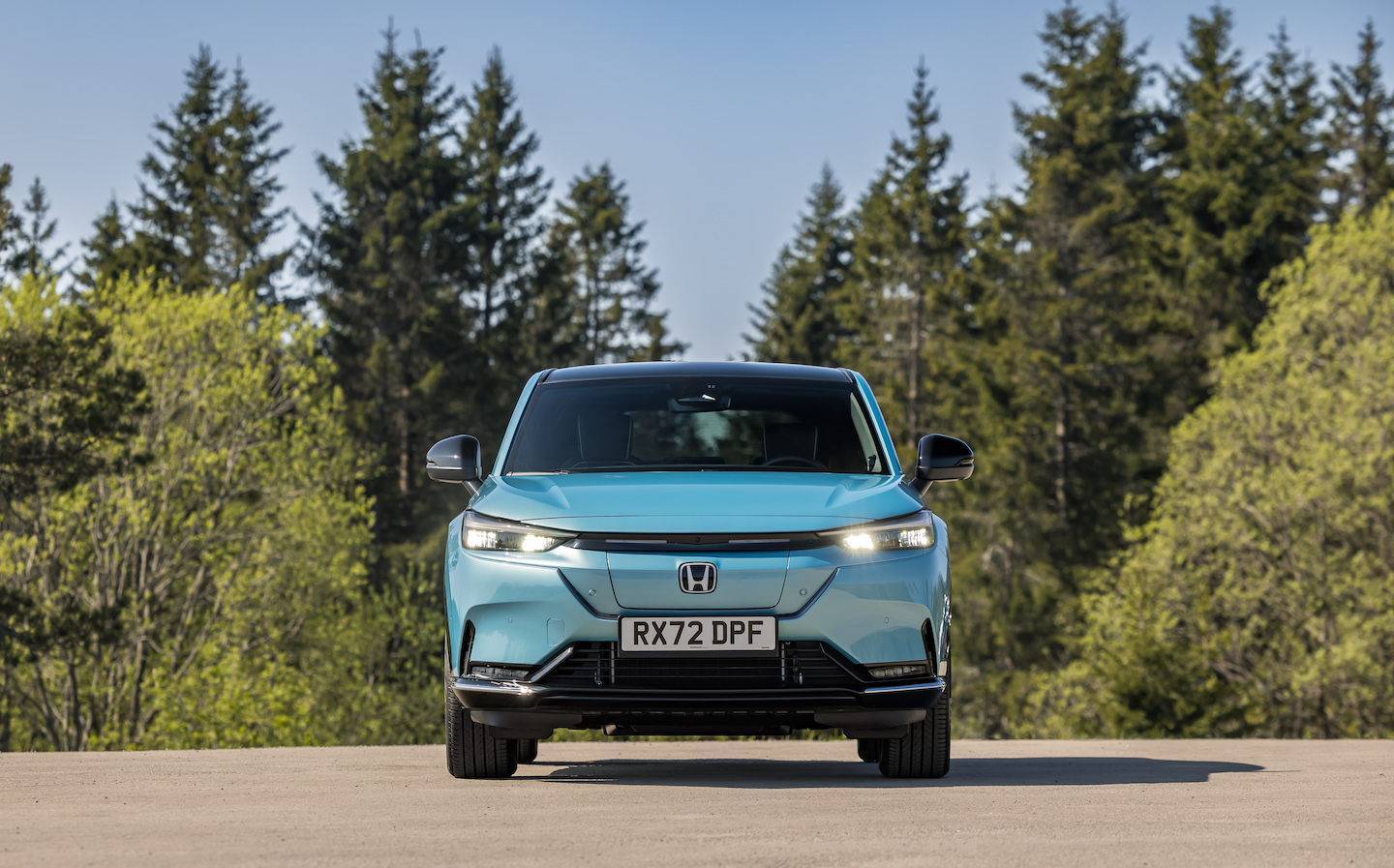Honda e:Ny1 2023 review: An uninspiring but much-needed addition to the range
Electric Honda crossover, aNy1?
Throughout the decades, Honda has produced models that have become household names and gone down in annals of automotive coolness and pure desirability. The Civic, Prelude, Legend, Integra, S2000. The NSX! We’re not so sure if e:Ny1 (not pronounced “e-anyone”, according to one Honda representative) will become such a storied name. Perhaps time will tell.
Following the highly charming but low-selling Honda e supermini, the e:Ny1 crossover could be the shot in the arm its EV sales need if it is to reach its ambitious target of producing more than two million electric vehicles per year by 2030.
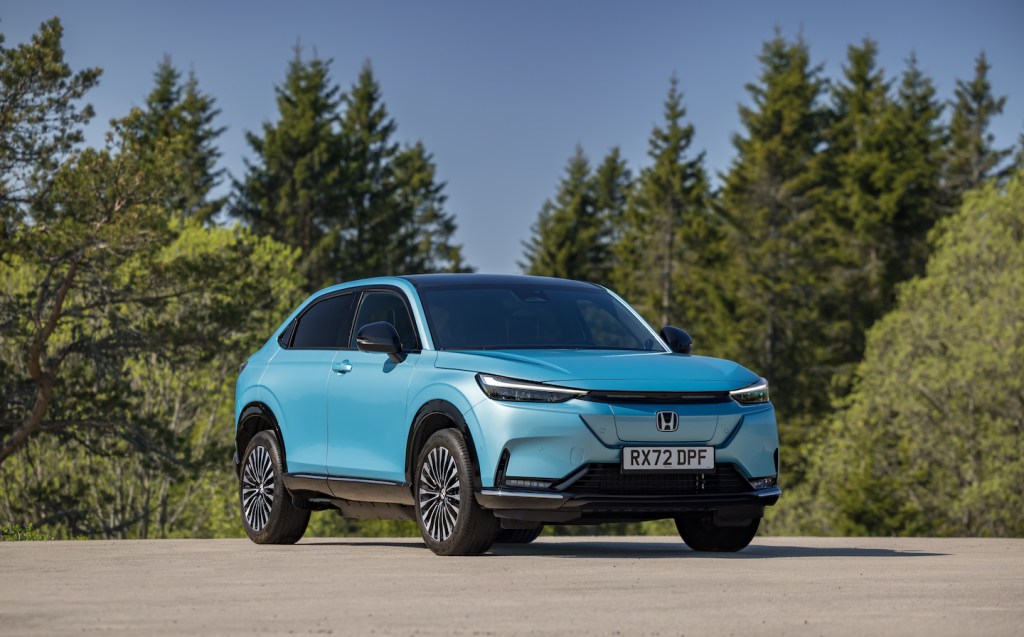
Exterior design and rivals
You may get a certain feeling of deja vu looking at the e:Ny1, that’s because it shares some bodywork and most of the overall exterior design with HR-V. Many of its competitors do the same for electric versions, such as the Kia Niro EV and Hyundai Kona Electric, which have slight exterior differences from their hybrid relations.
But the e:Ny1 uses different underpinnings to the HR-V — a platform Honda calls “e:N Architecture F”, with the letter F referring to it being a front-engined and front-wheel-drive layout. That means there are subtle differences to the look, such as a 57mm stretch in overall length despite the front and rear wheels being pushed 3mm closer together.
The most apparent difference to the HR-V comes at the front, where a new facia highlights its electric powertrain. Similarly, sleek headlights remain with a thin black panel between them, containing two LED indicators that activate when the car is charging.
And instead of the louvred grille of the HR-V, Honda designers have created a body-coloured panel that houses the battery charge port. The cover opens upwards with a small button, though it slightly obscures the charge port when you’re standing there to plug in the cable. Closing it also posed some issues for us, with the cover taking several attempts to properly latch shut on more than one occasion during our time with the car.
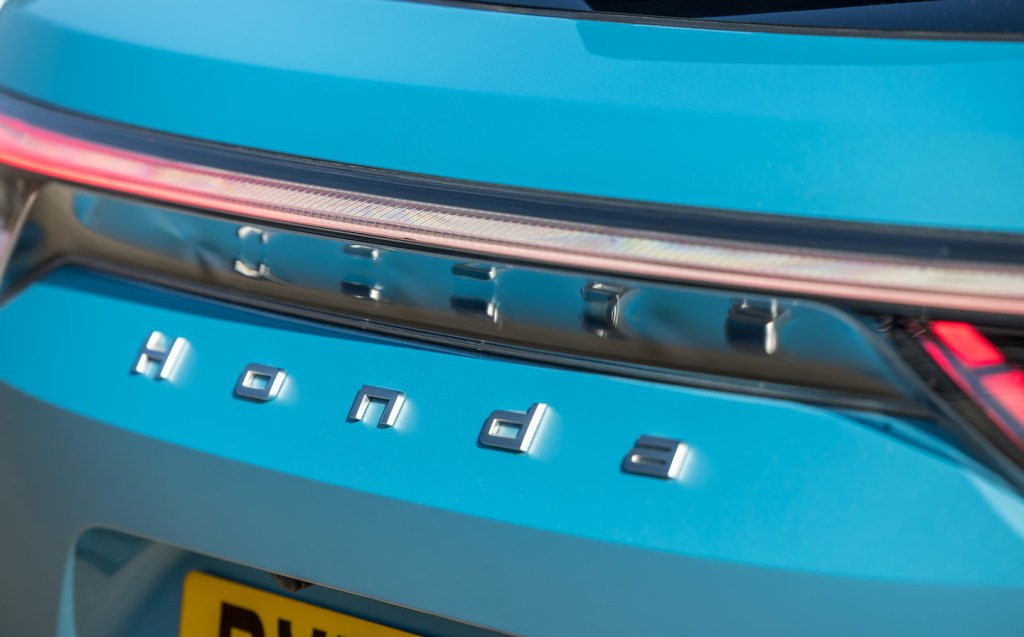
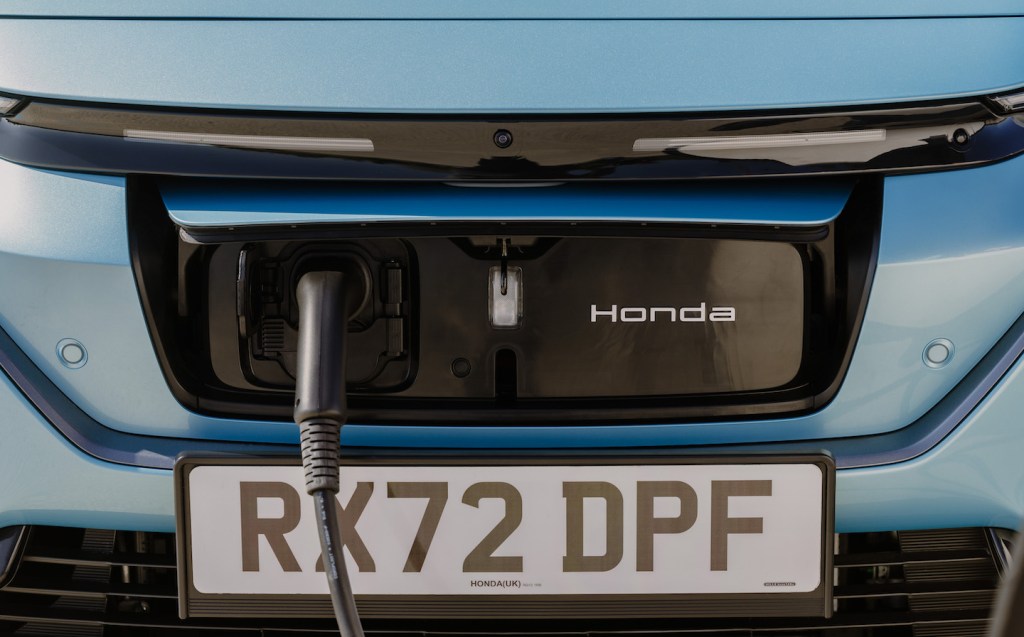
The e:Ny1 also features the word “Honda” across the rear, below the illuminated bar that joins the rear lights. Honda models usually carry the ‘H’ logo, but from now on electric models will have the name on the rear.
Buyers can choose from five exterior colours costing £650, with Crystal Black being a no-cost option, and all cars come on 18in alloy wheels.
Interior and practicality
Honda distinguishes the e:Ny1’s cabin with a 15.1in portrait touchscreen that is far more impressive looking than anything found in the Japanese brand’s other models to date.
The display is divided into three main sections: the top part manages infotainment and Android Auto or Apple CarPlay; the middle section handles various in-car functions such as the trip computer and power usage; while the screen’s base permanently displays ventilation and heating controls.
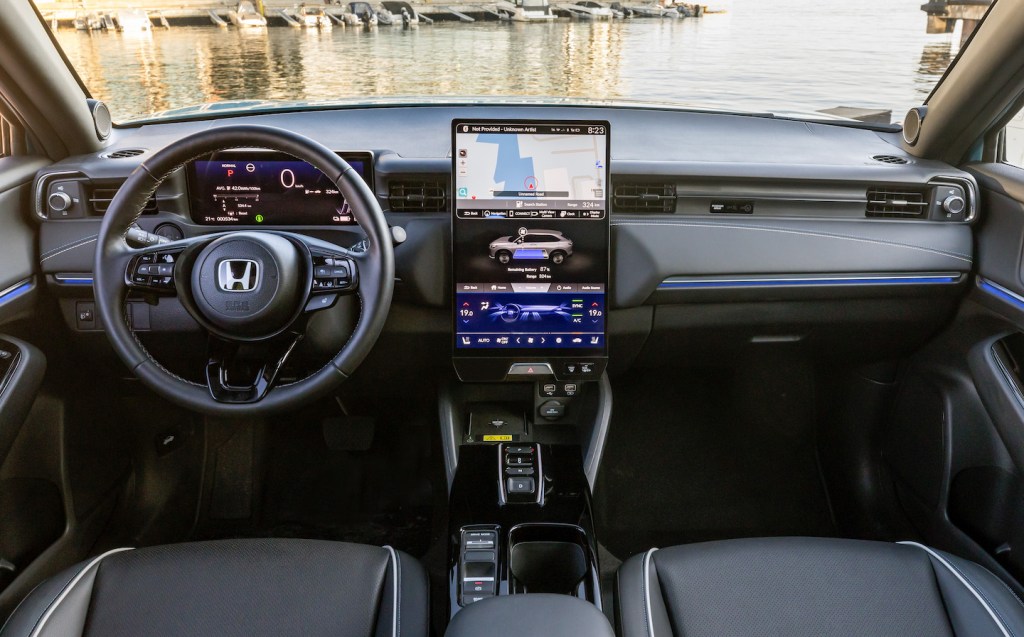
Facing the driver is a 10.25in display that presents all essential driving information. Honda replaces the traditional shift lever with button controls for the transmission, creating more space on the centre console for convenient access to the wireless charging pad.
The cabin layout is practical with well-distributed storage options. Nonetheless, while the interior feels solidly built there are some very average-quality plastics in plain sight, such as across the top of the dashboard. One upside to the plastic is that the dashboard doesn’t appear to reflect on the windscreen on sunny days.
Rear passenger space in the outer seats is adequate, though not class-leading in terms of headroom. To save headspace, the designers skip using a roller blind with the panoramic glass roof, instead offering a manual two-part blind option. The roof uses ‘low energy’ glass that reflects a significant amount of infrared light and UV rays, helping to minimise heat buildup inside.
As is typical in this segment, the middle seat remains a compromise. Unfortunately, the firmness of the seat base, narrowness, and reduced headroom makes it practically unusable even for smaller adults.

Opening the electrically-operated tailgate reveals a wide boot aperture, though it’s not especially deep. With the rear seats in place, the volume is 361 litres — not massive by segment standards. When the rear seats are folded down, the entire cargo space up to the roof totals 1,176 litres.
Technology and safety
There is a broad range of safety and driver assistance features in the e:Ny1 that fall under Honda’s “Sensing” suite. A front-facing camera covers a 100-degree field of view and combines what it sees with a high-speed image processing chip linked to the automatic braking system. On Advance models this set-up is supported by a 360-degree camera system.
Other features include a lane-keeping assist system, adaptive cruise control with a low-speed follow function for heavier traffic, and blind spot information. Automatic high-beam headlights help at night, as does a driver attention monitor that can detect if you’re not paying attention to the road or are becoming drowsy behind the wheel.
Honda Parking Pilot is standard on Advance models and can automatically park in various types of space, such as parallel and bay parking with or without white lines and diagonal parking with lines. It can also exit from parallel parking.
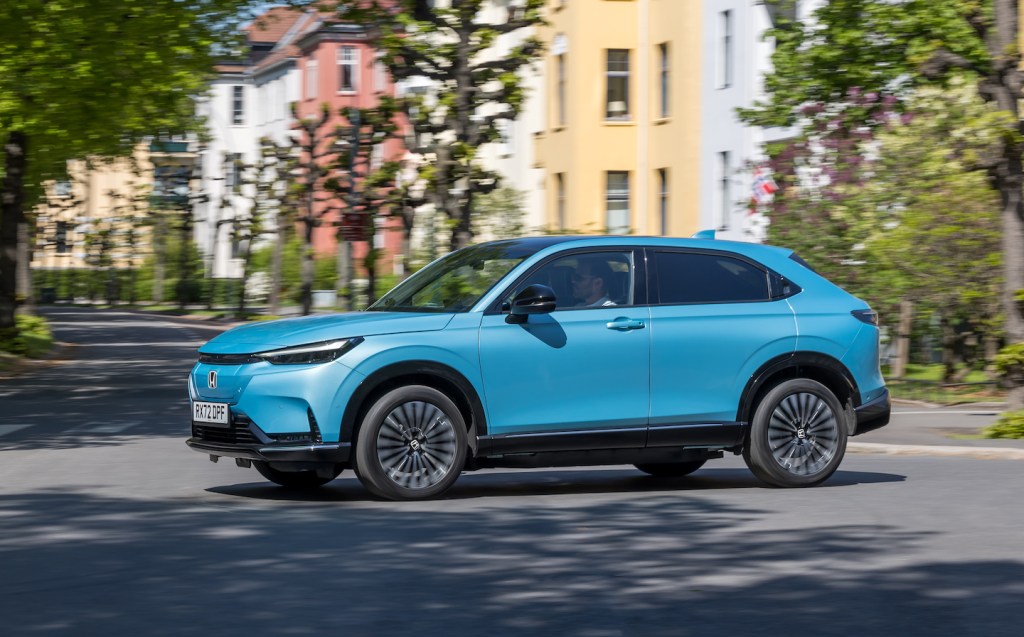
Performance, battery range and charging speeds
A single powertrain is available in the Honda e:Ny1, comprising a propulsion battery with a capacity of 68.8kWh, which is good for an official driving range of up to 256 miles.
A 150kW (201bhp) electric motor drives the front wheels through a single-speed automatic transmission. The power output matches many of the Honda’s rivals, such as the BYD Atto 3, Kia Niro EV and Volkswagen ID.4.
From a standing start the Honda accelerates to 62mph in 7.6 seconds and has a top speed of 99mph. That performance puts it right in the mix with its main competition, but where Honda hopes to gain an advantage is in its efficiency and battery charging.
According to its official figures, Honda claims a 92 per cent efficiency with its electric motor. At the same time, the battery management system has been designed to charge at a more linear rate than other cars. Typically EVs have a peak charging speed when using a rapid (DC) charger, but that is only a peak figure and is maintained for a short time before dropping to lower speeds as the battery fills. The e:Ny1’s peak DC charge rate of 78kW can be maintained across a broader section of the charging session, Honda claims. Recharging from 10 to 80 per cent full takes around 45 minutes.
As with other electric cars, the e:Ny1 can be charged at home or works, too, either using a wallbox or three-pin cable. Though charging speed are greatly reduced, the 11kW wallbox will take the car from 10 to 80 per cent full in six hours, so plugging in overnight or during the working day should easily suffice for top-ups.

Ride and handling
It is evident that Honda’s focus with the e:Ny1 is not to create an excessively sporty vehicle. Performance can be brisk but Honda acknowledges that most drivers prefer a comfortable and relaxing journey in this segment, which is evident in the car’s driving dynamics. The throttle response ensures a smoother and more enjoyable driving experience — you won’t get the neck-snapping acceleration here as you would in a Tesla Model 3 Performance.
Drivers can select a Sport mode to liven up proceedings, quickening accelerator response, but there remains only a modest 201bhp on hand. Still, it is more than a sufficient level of power for a car of this size, and somewhat pleasing is that Honda has refrained from pumping any artificial audio effects into the cabin to make it sound like you’re piloting a spaceship.
The 18in wheels are, by today’s standards, almost modest, but they contribute to what is a generally comfortable ride. The e:Ny1 uses low friction dampers to take the harshness off bigger, sharper bumps, while the added structural rigidity within the body and firm springs to cope with the added battery weight result in minimal body roll through bends.
The steering is relatively linear though feels light at lower speeds, becoming firmer as the speed increases.
Pricing and on-sale date
Two specification grades are available for the Honda e:Ny1, starting with the Elegance model costing £44,995 on the road. That’s quite a bit of cash by anyone’s standards, especially when the Kia Niro EV starts at £37,295.
Above that is the Advance version, expected to account for 60 per cent of sales, costing £47,195 on-the-road.
UK buyers will receive five years of complimentary servicing with the e:Ny1 according to the schedule, alongside a five-year warranty based on a combination of a three-year manufacturer cover and two years added as part of a Honda Care package.
UK and European roadside assistance is included for the same period.
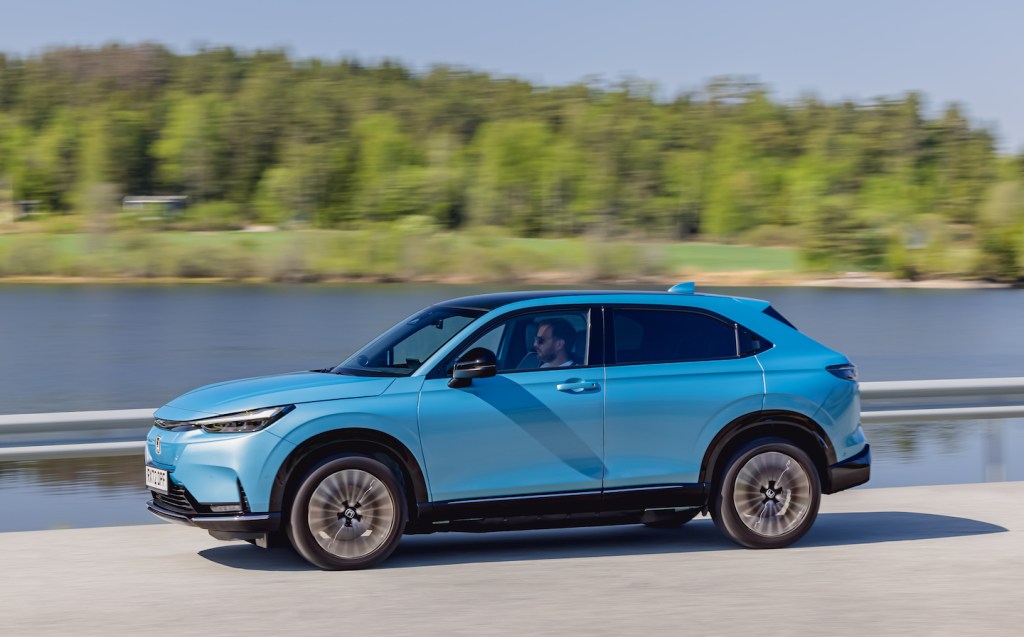
Verdict: Honda e:Ny1 review
It won’t excite enthusiasts but by today’s EV standards, the Honda e:Ny1 is a very competent and sensible car and is an important addition to Honda’s line up. The technical specifications appear impressive but there are some drawbacks to the rest of the package, namely the average boot space and interior material quality that leaves much to be desired.
While it fulfils the essentials of an electric crossover, the e:Ny1 falls short of the high standards once associated with Honda’s renowned design, craftsmanship and capabilities, and it’s not the most affordable model in its class.
Related articles
- After reading this review of the 2023 Honda e:Ny1, you might be interested to read about the best mid-sized family cars to buy
- Want to know what the best-selling cars in the UK are?
- You might also like to see our guide to the car makers’ electric vehicle plans
Latest articles
- Lewis Hamilton wants to design a modern day Ferrari F40 with manual gearbox
- Dacia Bigster 2025 review: The ‘anti-premium’ family SUV that punches above its weight
- Your car’s worn tyres could be being burnt illegally in India, investigation reveals
- Open-top 214mph Aston Martin Vanquish Volante is world’s fastest blow-dry
- F1 2025 calendar and race reports: The new Formula One season as it happens
- Alfa Romeo Junior Ibrida 2025 review: Hybrid power adds an extra string to crossover’s bow
- Top 10 longest-range electric cars: all with over 400 miles per charge (officially)
- Renault 5 Turbo 3E ‘mini supercar’ confirmed with rear in-wheel motors producing 533bhp … and insane levels of torque
- British firm Longbow reveals ‘featherweight’ electric sports cars with 275-mile range


